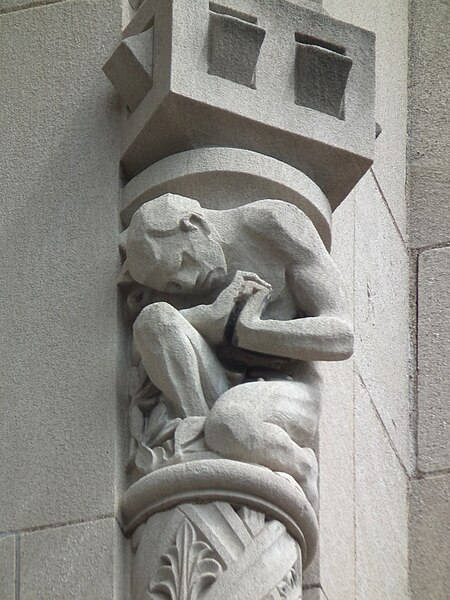
To enter the Church of the Assumption, you pass through an arch held up by Adam and Eve just after the Fall.


Leo McMullen, a disciple of the great John T. Comès, put his own unique Art Deco spin on traditional Romanesque architecture to give us a remarkably successful melding of medieval and modern sensibilities. McMullen was a native of Bellevue, and it looks as though he decided to put his hometown on the map by giving it a church that would be the envy of any city in the world. He succeeded.
Father Pitt took so many pictures of this glorious church that he is forced to split them up into multiple articles. And even with dozens of pictures, he has hardly begun to catalogue the artistic treasures to be found here. If you appreciate architecture, stained glass, painting, and sculpture, you owe yourself a visit to the Church of the Assumption.

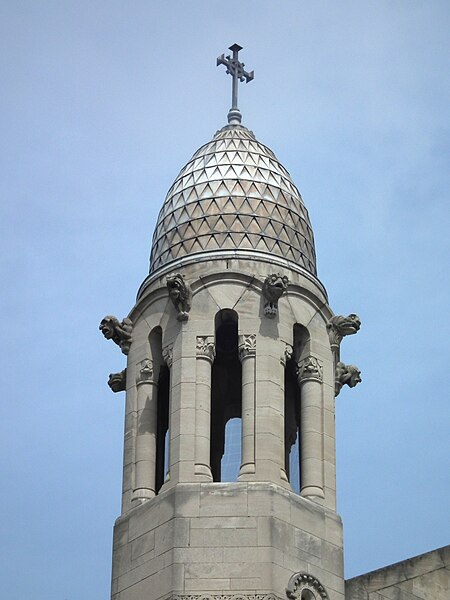

Many more pictures to come.

Now called “The Highline,” the Pittsburgh Terminal Warehouse and Transfer Company was one of the largest commercial buildings in the world when it was finished in 1906. The architect was the prolific Charles Bickel, who gave us a very respectable version of Romanesque-classical commercial architecture on a huge scale.
The building was planned in 1898, but it took several years of wrangling and special legislation to clear three city blocks and rearrange the streets to accommodate the enormous structure. Its most distinctive feature is a street, Terminal Way, that runs right down the middle of the building at the third-floor level: as you can see above, it has now been remade into a pleasant outdoor pedestrian space. You can’t tell from the picture above, but there is more building underneath the street.
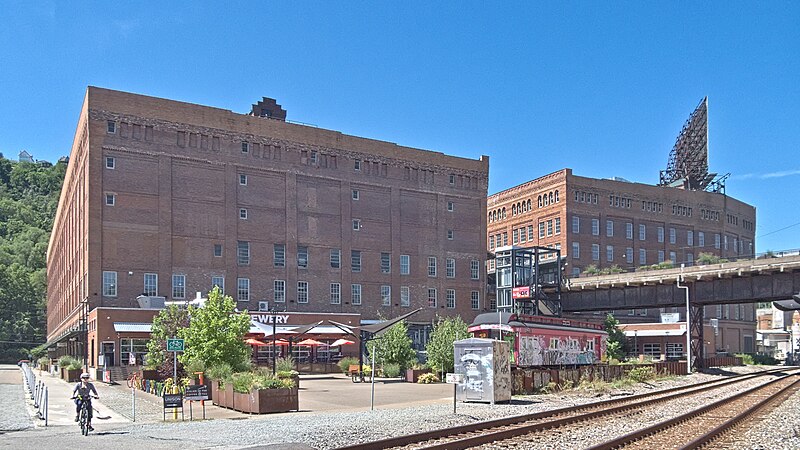
The bridge coming out across the railroad tracks is the continuation of Terminal Way, which comes right to the edge of the Monongahela, where the power plant for the complex was built.
The reason for the complex is more obvious from this angle. Railroad cars came right into the building on the lowest level to unload.
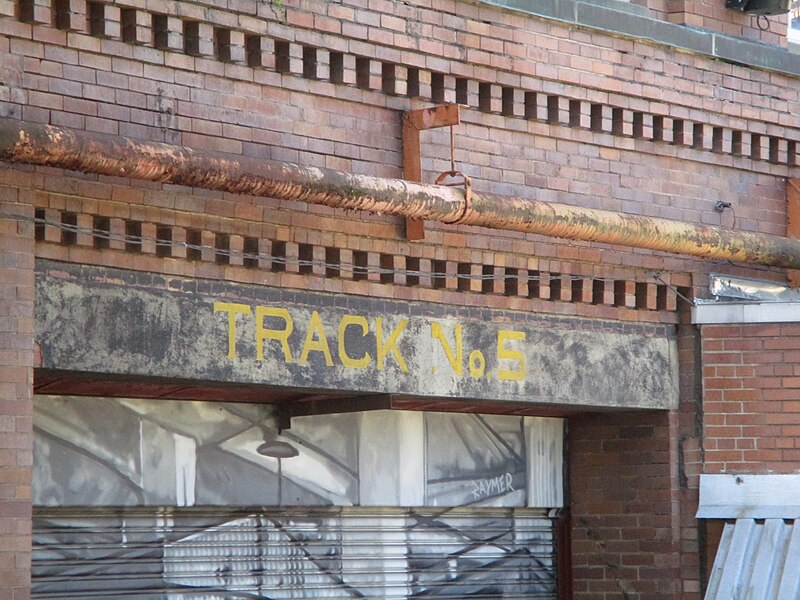
It also had access to the river, and road access to Carson Street at the other end. Every form of transportation came together here for exchange and distribution.

McKean Street separates the main part of the complex from the Carson Street side; Terminal Way passes over it on a bridge.

The Fourth Street side shows us the full height of the building. Fourth Street itself is still Belgian block.

A view over the McKean Street bridge and down Terminal Way from the Carson Street end.
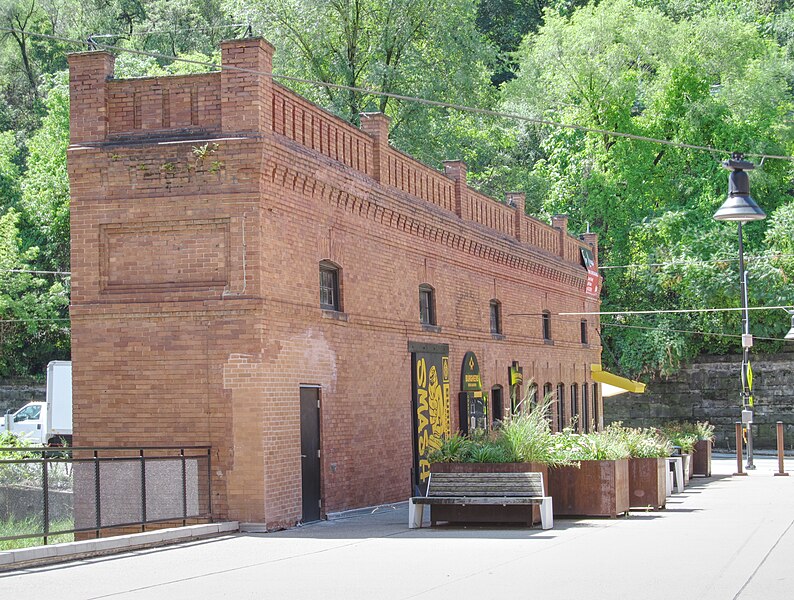
This absurdly narrow building is on the Carson Street side of the complex; it has usually housed a small restaurant of some sort. One suspects that this was the result of some kind of political wrangling that ended in a ridiculously small space on this side of Terminal Way between Carson and McKean Streets.

The power plant for the complex, seen above from the Terminal Way bridge across the railroad. It could use some taking care of right now.


This view of the complex from the hill above Carson Street was published in 1911 as an advertisement for cork from the Armstrong Cork Company.
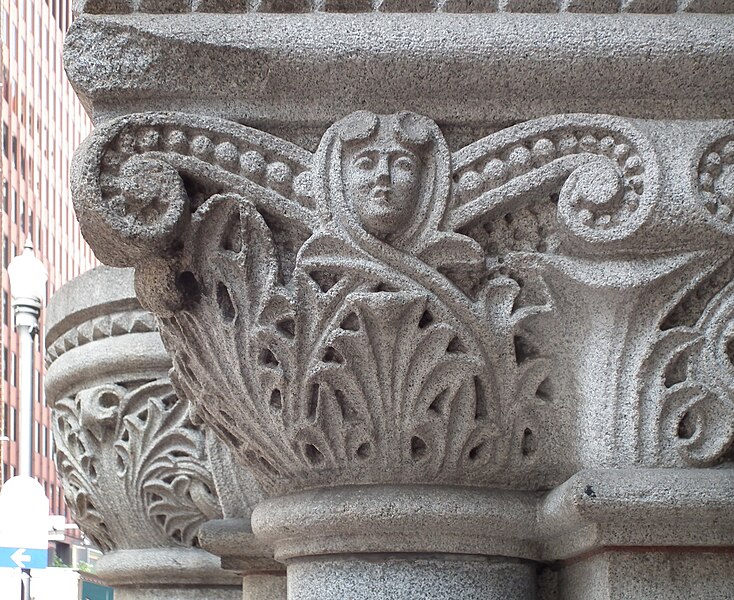
The German National Bank—now the Granite Building—is one of the most ornately Romanesque constructions ever put up in a city that was wild for Romanesque. The architect was Charles Bickel, but much of the effect of the building comes from the lavish and infinitely varied stonecarving of Achille Giammartini, Pittsburgh’s favorite decorator of Romanesque buildings.
We have sixteen more pictures in this article, and this is only a beginning. Old Pa Pitt will have to return several more times with his long lens to document Giammartini’s work on this building.
(more…)
We’ll have to wait for winter to get a good view of the whole front of this interesting church, which is obscured by a lush growth of mimosa trees. But we can appreciate some of the details now.
The architect was James N. Campbell. Old Pa Pitt knows of only two churches by Campbell still standing in Pittsburgh: this one and the old Seventh Presbyterian Church on Herron Avenue, Hill District. (There are probably others as yet unidentified.1) Both churches have similar styles, and both have similar histories. They both became African Methodist Episcopal churches: this one was Avery Memorial A. M. E. Zion Church for quite a while. They both were abandoned. This one may still have some hope: it looks as though someone has been trying to refurbish it, perhaps as a private home. But it also looks as though the renovations have stalled.
Since Father Pitt considers this an endangered building, he has collected some pictures of the more interesting details to preserve them for posterity in case the worst should come to pass.
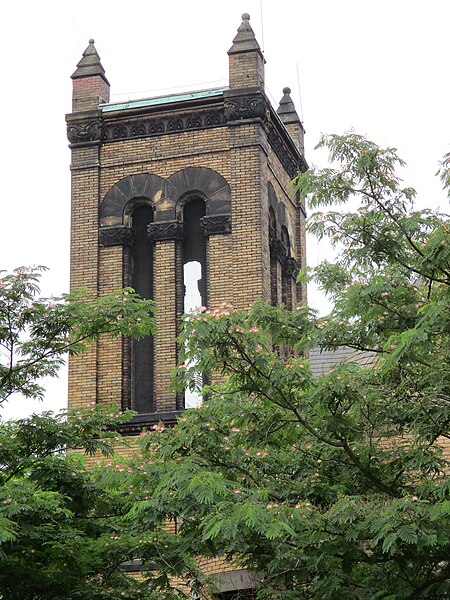

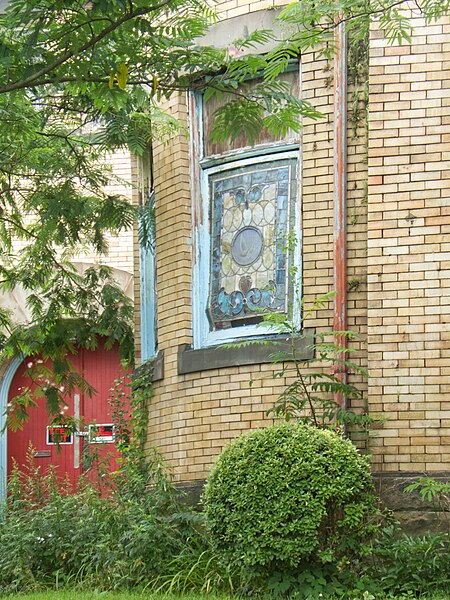




Closed since 2017, the Western Penitentiary (or, more recently, State Correctional Institution—Pittsburgh) will have a hard time finding a buyer. It would perhaps make a fine mansion for an eccentric supervillain, but most real-world supervillains are dreadfully prosaic in their tastes.
Nevertheless, it is a masterpiece of prison architecture—aesthetically, at least. The architect was Edward M. Butz, and it was built between 1876 and 1882, with various later additions. It looks more like a prison than the Bastille did, and so we present it on Bastille Day, with the cheerful news that no inmates are imprisoned here, but the sad news that it may eventually have to be pulled down by a demolition contractor rather than a revolutionary mob.
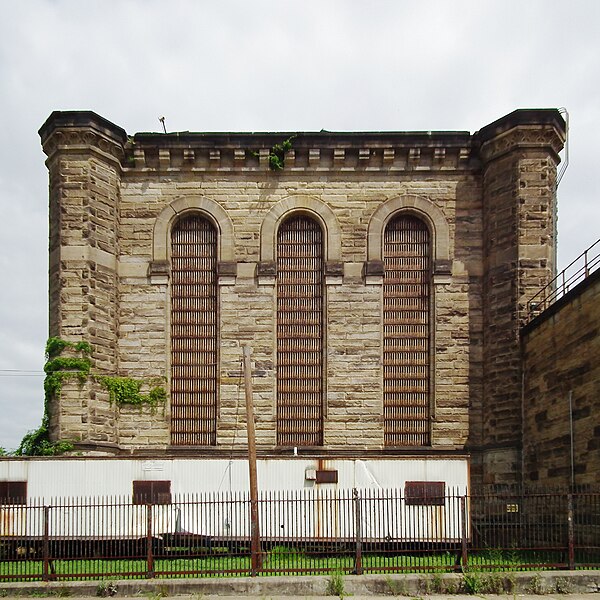



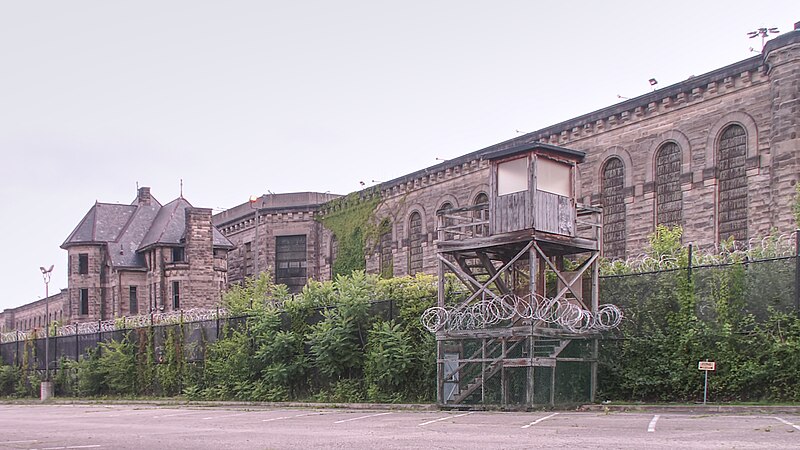







This glorious Romanesque church was closed in 2009, but it was taken over by a community education organization called Dragon’s Den, which has kept it up beautifully, and in the well-preserved interior has added “a state-of-the-art two-level challenge course, climbing wall, and a 160-foot zip line that connects the choir loft to the former altar.” Now you know what to do with a big vacant church.
Addendum: The architect was Frederick Sauer, who gave us a number of fine churches and the whimsical Sauer Buildings in Aspinwall.


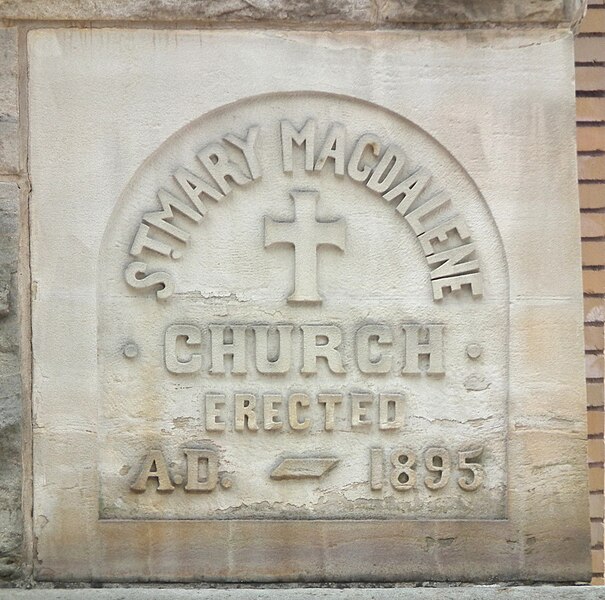

The rectory is overshadowed by the magnificent church, but it is certainly a striking design in its own right.

This gorgeous synagogue in the style old Pa Pitt calls Jewish Romanesque is fortunately owned by a church that obviously appreciates the building and has not altered its Jewish ornamentation. Father Pitt’s apologies for the lighting; the sun was from the wrong direction, but our cameras did their best.
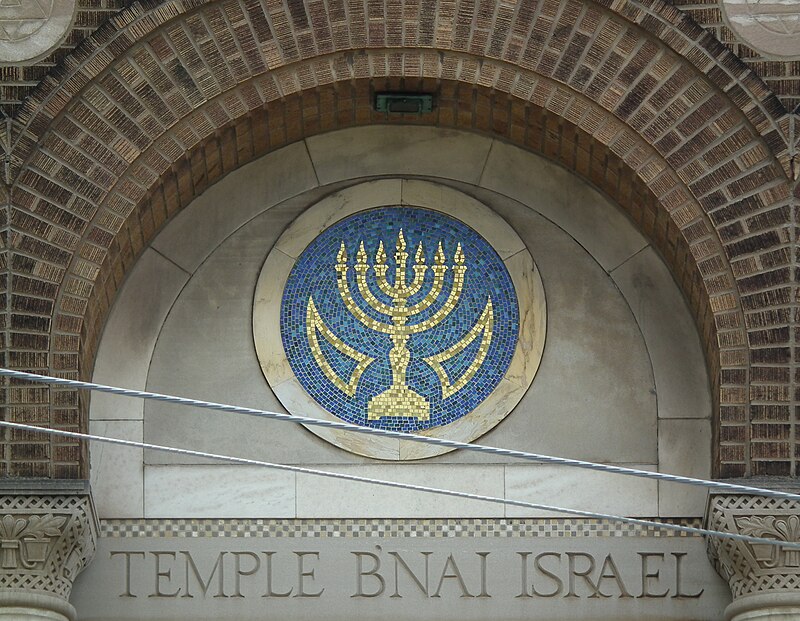

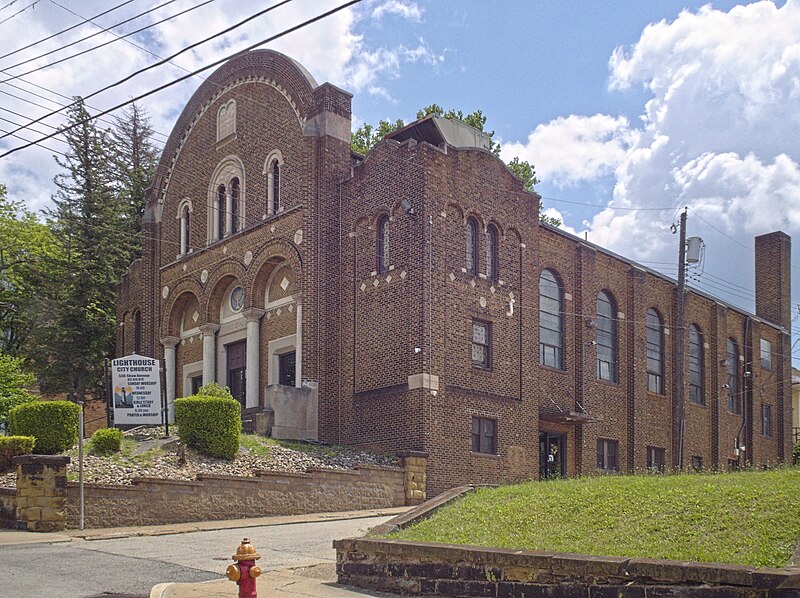

The cornerstone gives us a date of 1922 (or 5683) for the building and 1912 for the foundation of the congregation. Temple B’nai Israel was the first Reform congregation in McKeesport, and the congregation still exists, though in 2000 it moved to White Oak. The Temple’s Web site has a timeline of the congregation’s history. (Update: The congregation has decided to wind down operations and close in 2025.)
The Heinz History Center owns a commemorative plate from 1962 for the “Golden Anniversary” of the congregation; it has a picture of the building, and a misprinted foundation date—“1902” instead of 1912, though the words “GOLDEN ANNIVERSARY” are right above it.